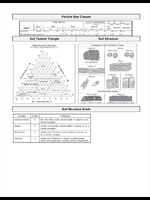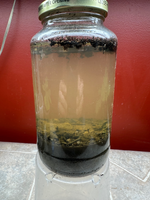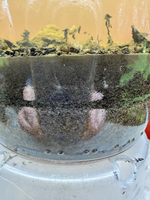bushdoctor82
Well-known member
I collected this soil sample two weeks ago and the water is finally starting to clear. Though hard to detect the exact delineation of sand/silt, the area of sample collection is a loamy sand. It’s an easy process to complete. Collect soil sample and fill a jar ~1/3. Fill remainder with water and shake. Let sit for a few hours or days. Measure each layer as a percentage and compare to soil textual triangle. You’ll get a good idea on the texture of your soil.
I’ll be planting a fig tree in the Spring in this area that has RKN. Since Fall, I’ve planted and tilled in mustard and applied a few rounds of JLF and JMS. In mid-March, I’ll be planting mustard and applying JLF/JMS again and after tilling in, I’ll plant the fig tree and inoculate leaf mold and wood chips with wine cap mushrooms as recommended by @Inflorescence.



I’ll be planting a fig tree in the Spring in this area that has RKN. Since Fall, I’ve planted and tilled in mustard and applied a few rounds of JLF and JMS. In mid-March, I’ll be planting mustard and applying JLF/JMS again and after tilling in, I’ll plant the fig tree and inoculate leaf mold and wood chips with wine cap mushrooms as recommended by @Inflorescence.



